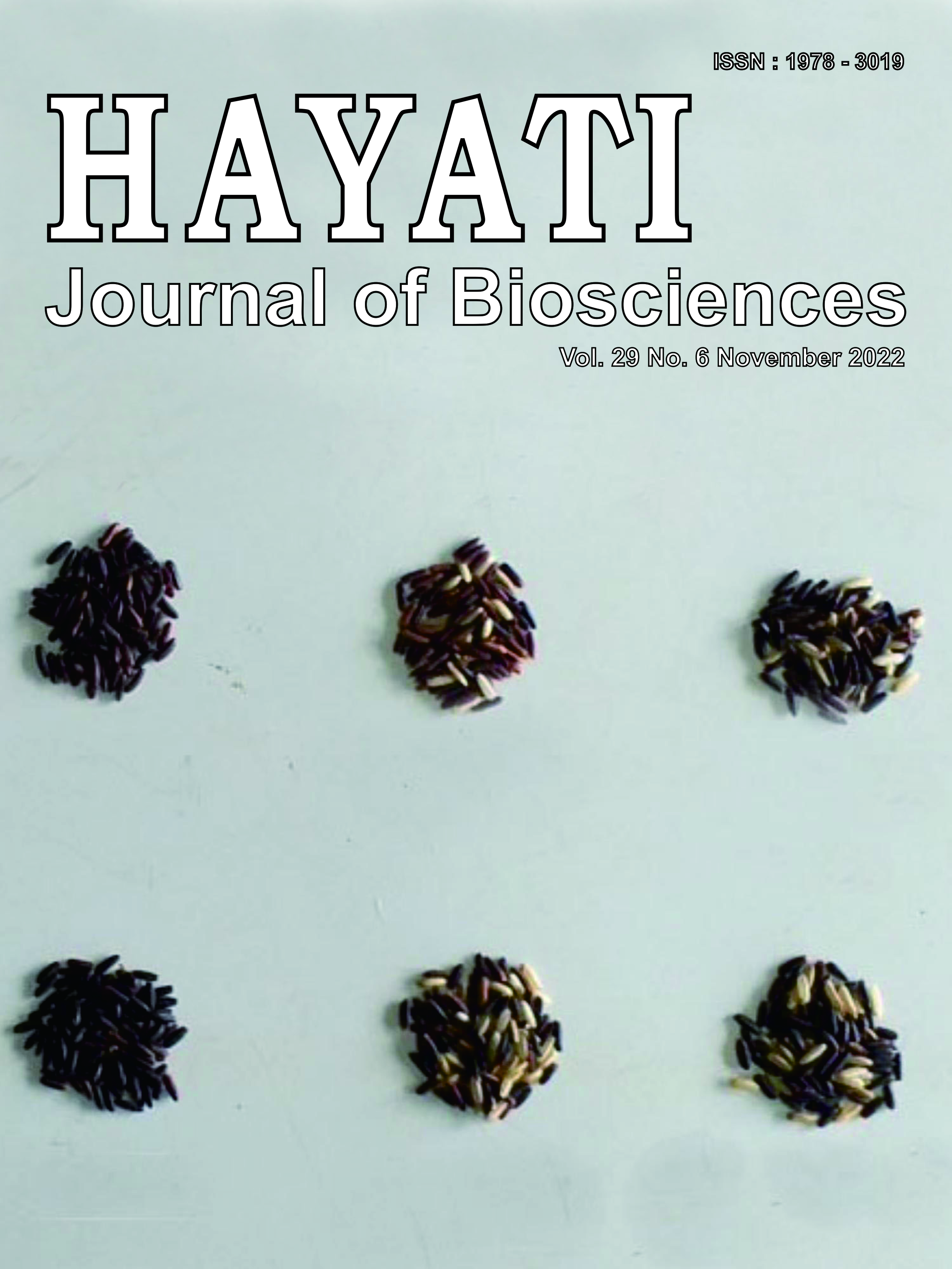Isolation of DNA Aptamers for Enteropathogenic Escherichia coli (EPEC) Detection using Bacterial-SELEX Approach
Abstract
Enteropathogenic Escherichia coli (EPEC) is a Gram-negative pathogenic bacterium that causes diarrheal disease, especially in infants and children. Aptamers are short chain oligonucleotides that have high affinity, specificity, and selectivity to their targets, which have potential to be developed as a method for diagnosing pathogens. In this study, aptamer was isolated through the Systematic Evolution of Ligands by Exponential Enrichment (SELEX) method using whole cells bacteria (Bacterial-SELEX) for recognizing pathogenic E. coli EPEC K1.1 which was isolated from children with diarrhea in Indonesia. Ten rounds of bacterial-SELEX procedure were conducted with modification conditions by using Top10, DH5a E. coli cells, Listeria monocytogenes, and Lactobacillus plantarum S34 as counter-selections. The selection process was started with a pool of ssDNA random library consisting of a random base with 40-nucleotides long flanked with fixed primers sequence for aptamer amplification purpose. Short single-stranded DNA amplification was done by symmetric and asymmetric PCR. The highly enriched oligonucleotide pools (pooled 8, 9, and 10) were cloned and the resulting ssDNA aptamers were identified by Sanger DNA sequencing. Finally, twelve aptamers with unique sequences and various secondary structures including G-quadruplex sequence motif within aptamers were obtained as candidates specific aptamer for detection and capturing of EPEC K1.1.
Downloads
Copyright (c) 2022 Nurul Amilia, Bugi Ratno Budiarto, Apon Zaenal Mustopa, Tegar Aprilian, Baso Manguntungi, Endang Saepudin

This work is licensed under a Creative Commons Attribution-NonCommercial 4.0 International License.
HAYATI J Biosci is an open access journal and the article's license is CC-BY-NC. This license lets others distribute, remix, tweak, and build upon author's work, as long as they credit the original creation. Authors retain copyright and grant the journal/publisher non exclusive publishing rights with the work simultaneously licensed under a https://creativecommons.org/


















.png) IPB University
IPB University Department of Biology
Department of Biology The Indonesian Biological Society
The Indonesian Biological Society 

